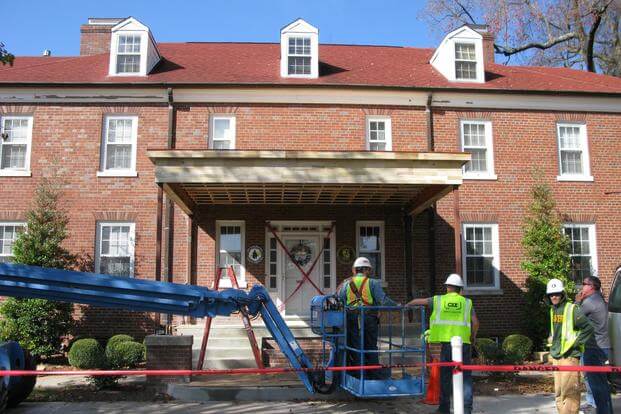The Army is soliciting comments from the public and historic organizations about a plan to make it easier to repair, maintain and renovate more than 2,700 historic houses on 35 bases throughout the country, it announced Monday.
The interwar-era houses were built between 1919 and 1940 and are protected under the National Historic Preservation Act (NHPA), meaning the Army needs to consult the Advisory Council on Historic Preservation before making changes to the properties. At nearly 100 years old, the houses are in need of lead paint abatement, among other repairs.
The Army is asking the council for a "program comment," which would allow it to tackle the "large number of frequent and repetitive undertakings" the historic homes have by evaluating the undertakings -- such as maintenance, repairs, transfers, selling or leasing -- as a group instead of individually.
"The Program Comment for Army Inter-War Era Historic Housing will address critical issues that directly affect the quality of life, health and safety of military families that live in this historic housing," Federal Preservation Officer David Guldenzopf said in letters to historic building organizations.
Related: Eight Military Families in Texas Sue Housing Company over Alleged Water Leaks, Mold and Bugs
U.S. Army Garrison Hawaii; Fort Bragg, North Carolina; Joint Base Lewis-McChord, Washington; and Fort Sill, Oklahoma, have more than 200 interwar-era houses each; Fort Benning in Georgia has the most at 453 houses.
Beginning Nov. 13, the Army Federal Preservation Officer will hold monthly consultation conference calls every second Wednesday until June 2020. The open forum discussion is meant to gather feedback from interested members of the public under the NHPA's consultation requirements when making changes to the homes' structure, associated buildings or grounds.
The first call will be an introduction and will cover Army privatized housing financing. Other calls will discuss property types, housing treatment measures and design guidelines, and identify properties of particular importance for special care.
The "program comment" was last used in 2002 when the Army realized how inefficient it would be to review each Wherry- and Capehart-era house project separately since the thousands of buildings were similarly constructed. Those types of houses were built between 1949-1955 and 1955-1962, respectively. Lawmakers were concerned those older homes weren't serving the needs of modern military families.
The Office of the Secretary of Defense estimated in 2006 that using the "program comment" saved the Army $80 million to $90 million in compliance costs and let it proceed programmatically instead of case by case.
The Army published the intent for a program comment to the Federal Register, which will be open to public comments until Dec. 11. There's also a website with additional information about the proposal here.
-- Dorothy Mills-Gregg can be reached at dorothy.mills-gregg@monster.com.
Read more: Navy SEAL Eddie Gallagher's Family Is Asking Trump for a Presidential Pardon











